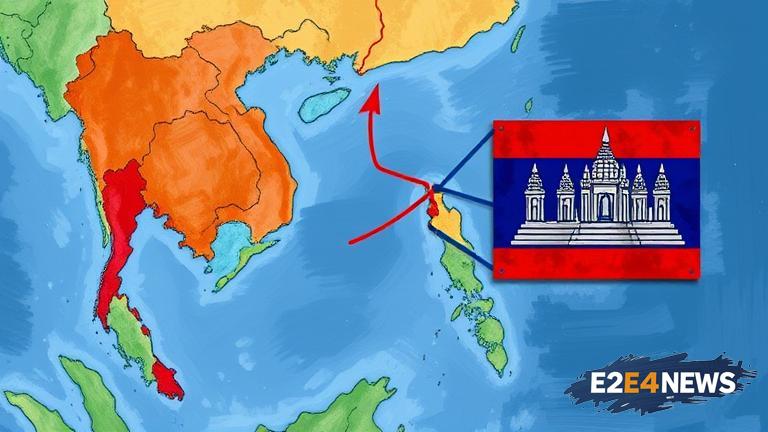The Thailand-Cambodia border dispute is a complex and sensitive issue that has been ongoing for decades. The conflict centers around a disputed area near the Preah Vihear temple, a UNESCO World Heritage site located on the border between the two countries. Both Thailand and Cambodia claim ownership of the area, which is rich in natural resources and has significant cultural and historical importance. The dispute has its roots in the early 20th century, when the border between Thailand and Cambodia was first established. However, the border was never fully demarcated, leading to confusion and tensions between the two countries. In 1962, the International Court of Justice ruled that the Preah Vihear temple belonged to Cambodia, but the ruling did not specify the exact border between the two countries. Since then, there have been numerous clashes and skirmishes between Thai and Cambodian troops over the disputed area. In 2008, the conflict escalated into a full-blown war, with both sides suffering heavy losses. The war was sparked by a dispute over the construction of a road near the temple, which Cambodia claimed was on its territory. Thailand, on the other hand, claimed that the road was on its side of the border. The conflict has had significant humanitarian and economic consequences, with thousands of people displaced and trade between the two countries severely affected. Despite numerous attempts at negotiation and mediation, the dispute remains unresolved. In recent years, there have been efforts to demarcate the border and establish a permanent ceasefire, but progress has been slow. The conflict has also had significant regional implications, with other countries in Southeast Asia calling for a peaceful resolution. The Association of Southeast Asian Nations (ASEAN) has played a key role in mediating the conflict, but its efforts have been hindered by the complexity of the issue and the deep-seated tensions between the two countries. The dispute has also had significant environmental implications, with the construction of roads and other infrastructure projects threatening the fragile ecosystem of the region. In addition, the conflict has had a significant impact on the local population, with many people living in the disputed area facing displacement and poverty. The Thai and Cambodian governments have both been criticized for their handling of the conflict, with many accusing them of prioritizing national interests over the needs of local communities. Despite the challenges, there are hopes that a peaceful resolution to the conflict can be found. In recent years, there have been efforts to promote people-to-people diplomacy and cultural exchange between the two countries, which many see as a key step towards building trust and understanding. However, the road to peace will be long and difficult, and will require significant efforts from both governments and civil society. The international community has a critical role to play in supporting a peaceful resolution to the conflict, and in promoting regional stability and cooperation. The United Nations and other international organizations have called for a peaceful resolution to the conflict, and have offered support and assistance to both countries. In conclusion, the Thailand-Cambodia border dispute is a complex and sensitive issue that requires a comprehensive and sustainable solution. The conflict has significant humanitarian, economic, and environmental implications, and requires the attention and support of the international community. With patience, persistence, and a commitment to peace and cooperation, it is possible to find a resolution to the conflict that benefits both countries and promotes regional stability and prosperity.
